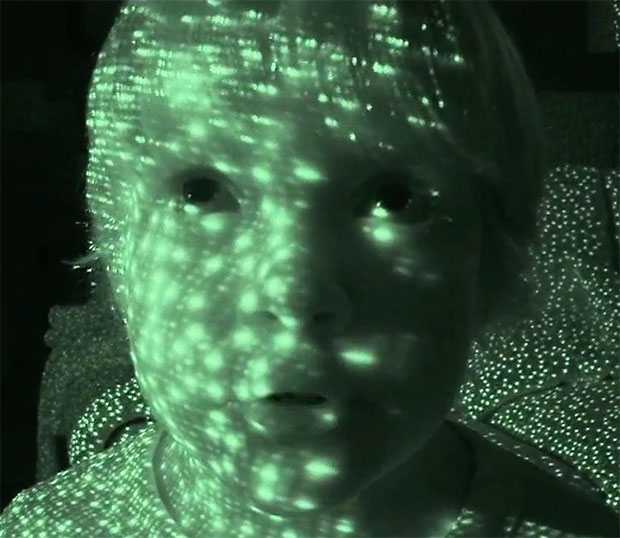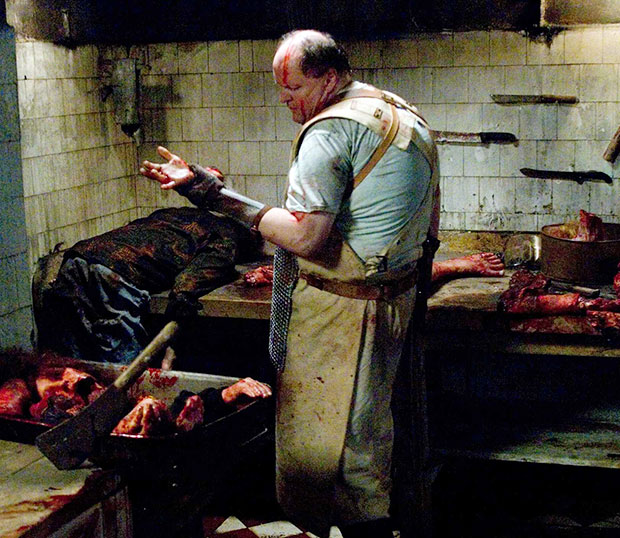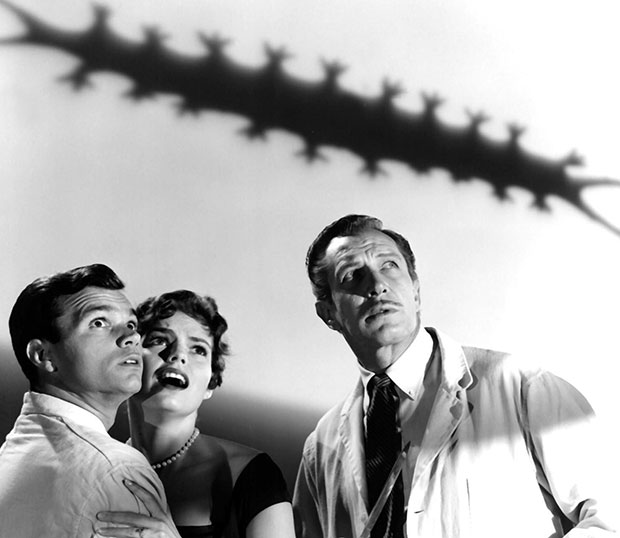
As we draw nearer and nearer to October 31st, the words of Haddonfield’s Sheriff Brackett echo in my mind: “It’s Halloween, I guess everyone’s entitled to one good scare.” As apropos as this statement once was, it is sadly archaic when applied to horror films. The fact of the matter is, the number of desensitized horror film fans is reaching critical mass. Frankly, we are just getting harder and harder to scare. That’s not to say there are no legitimately scary movies made anymore, it’s simply that those movies are far and away the exception and not the rule.
The reason we’re getting a fourth installment of the Paranormal Activity franchise is no mystery. They never fail to yield a frighteningly enormous box office gross. In particular, the ratio of money raked in versus money spent on these films is staggering. But why do they keep making so much green in the first place? When the first Paranormal Activity was released, it re-introduced mainstream audiences to the concept of found footage. That resurgence proved incredibly timely.
Studios large and small have struggled to stay ahead of the curve when it comes to horror audiences. If you look back over the history of the horror genre, there is a rotating carousel of very pronounced trends.  For a while it was classic literary monsters, then giant bugs and lizards dominated the world, then slashers appeared from the shadows of our nightmares. As audiences became more sophisticated, or at least savvier to the tricks of these horror treats, the stakes had to be perpetually raised and the standards had to be redefined.
For a while it was classic literary monsters, then giant bugs and lizards dominated the world, then slashers appeared from the shadows of our nightmares. As audiences became more sophisticated, or at least savvier to the tricks of these horror treats, the stakes had to be perpetually raised and the standards had to be redefined.
The amount of violence utilized was one of those evolving standards, or perhaps devolving depending on whom you ask. It reached a point in which audiences had practically seen it all. Slashers lost their edge, J-horror was sent packing, and the burgeoning remake trend didn’t offer much hope. Horrorphiles were beginning to numb to most cinematic experiences. So when scaring them seemed impossible, shocking them became the only conceivable recourse. Thus was born the gruesome, graphic subgenre that earned the unfortunate moniker torture porn. It became standard practice to disgust, disturb, and repulse the audience with depraved acts of mutilation. Movies like the Saw franchise, Hostel, and High Tension pushed the envelope for sadism in horror. Of course, there had been gory movies before, but never had the presentation been so dark and nihilistic.
It didn’t take long for these graphic movies to fall out of favor with mainstream audiences, once again raising the issue of how to keep people scared. Then came Paranormal Activity and the rebirth of found footage. By putting the audience in the point of view of the characters in the film, through the lens of a handheld or character-operated camera, these movies dissolved the fourth wall. Suddenly the safety net was gone and the audience experienced the terror right along with the characters. Though it only cost fifteen thousand dollars to produce, Paranormal Activity made well over one hundred million at the box office and spawned a host of imitations.
But if Paranormal Activity 4 is any indication, found footage is beginning to run out of gas. It’s becoming too normal to satisfy our desire for the paranormal. So what’s the next step? Where can horror movies possibly go from here? If found footage fails to even startle us anymore, what’s the next logical step? Ironically, possibly the best hope for the genre’s future is rooted in its past.
In the 1950s, horror filmmakers understood the importance of spectacle in scary movies. There was no small amount of showmanship that went into some of the larger titles of the era. Though Alfred Hitchcock won a great deal of acclaim for his skills in this regard, director William Castle took the concept to the next level.  He turned a night at the movies into something more akin to a theme park attraction; working in several practical gimmicks and in-theater stunts to complement his films. For Macabre, he actually offered theatergoers a life insurance policy from Lloyd’s of London against their dying of fright. For The Tingler, he went so far as to attach electrodes to certain seats to give certain members of the audience a very real jolt timed with the appearance of the film’s spine-tingling creature.
He turned a night at the movies into something more akin to a theme park attraction; working in several practical gimmicks and in-theater stunts to complement his films. For Macabre, he actually offered theatergoers a life insurance policy from Lloyd’s of London against their dying of fright. For The Tingler, he went so far as to attach electrodes to certain seats to give certain members of the audience a very real jolt timed with the appearance of the film’s spine-tingling creature.
Perhaps it’s time to return to this ideology as the natural extrapolation of found footage. Though the argument could be made that these tricks cheapen the art form of film, there is still a lesson here. The all-encompassing theatrical experience that includes both the motion picture itself and in-theater entertainment is quite possibly the next necessary advancement for the horror genre. We need a more effective way to extend those images beyond the screen, and 3D horror already seems to be spinning its wheels. Imagine seeing a film set in a haunted house, and you actually had to navigate through haunted house props and performers to get to your seat? How’s that for adding another dimension to your viewing?
Sound far-fetched? The Alamo Drafthouse chain has been dabbling with this concept for years, and the events they put together are always unique, well-crafted, and highly-publicized. One of their best had to be equipping four coffins with monitors so four lucky/unlucky patrons could watch Ryan Reynold’s Buried while being buried alive themselves. Directors are utilizing this format too: Darren Lynn Bousman (Saw II, Repo! The Genetic Opera) is touring the country with his new film The Devil’s Carnival. Each stop on the tour comes replete with the presentation of the film itself as well as in-theater performances by jugglers, snake dancers, and all manner of freaky carnival artists. That theatrical event, coupled with the urgency of seeing a touring film before it leaves town, much like a play, may just reenergize the genre.
Is there a guarantee the William Castle or Darren Bousman model will work? No, but if studios still want to scare us, they’re going to have to think outside the box, and make horror movies more tangible.
[Photo Credit: Paramount Pictures; Lionsgate; Columbia Pictures]
More:
‘American Horror Story: Asylum’ Premiere Explanations and Expectations
Follow ‘ParaNorman’ with Netflix’s Best Zombie Flicks
How ‘Possession’ Producer Sam Raimi Continues to Be a Master of Horror
From Our Partners:




